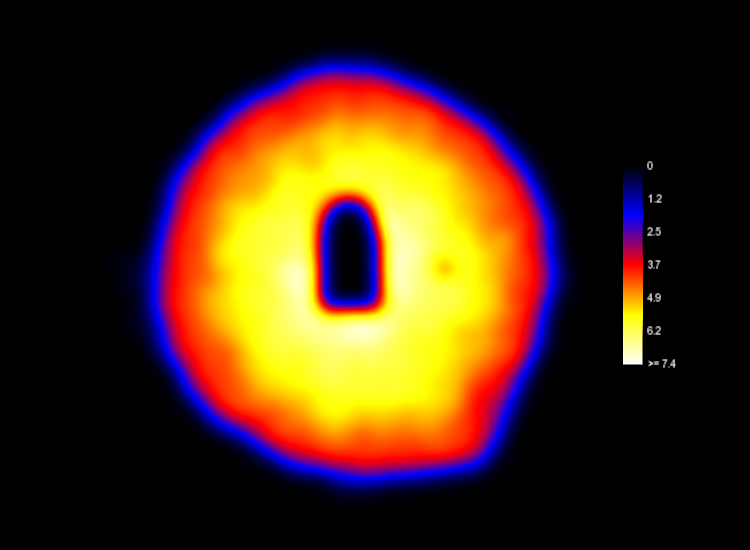
Sean Curtis, Stephen J. Guy, Rahul Narain, Sachin Patil, Ming C. Lin, and Dinesh Manocha
Department of Computer Science, University of North Carolina at Chapel Hill
We highlight the results of our work on simulating the very large and dense crowds that come to Mecca for Hajj.
Note: Quicktime plugin is needed for playing following videos. If that doesn't work for you, direct download links are also provided.
Fig. 1. Video footage of pilgrims circling the Kaaba during Hajj. We use this footage to validate our results.
Download Video1Fig. 2. Simulation of 25,000 pilgrims circling the Kaaba during Hajj (5-10 Hz).
Download Video2Fig. 3. Close-up of the simulation near the Kaaba.
Download Video3As can be seen by comparing Fig. 1 and Fig. 2, our crowd simulations visually match real video to a high degree. Both videos demonstrate the smooth counterclockwise motion of the crowd around the Kaaba, and demonstrate increasing density as pilgrims approach the Kaaba itself.
Fig. 3 shows a close-up version of the simulation that highlights the variation in behavior which our crowd models can support. The close-up shows the interaction of pilgrims moving more directly straight inward and those circling more cooperatively.
Fig. 4. Density Visualization. Visualization of crowd density in the simulation.
 [WMV]
[WMV]
Fig. 5. Speed Visualization. Speed of individuals in the simulation.
 [WMV]
[WMV]
Fig. 6. Progress Visualization. Progress of simulated individuals as they perform the Tawaf ritual. Colors change with increasing speed from black to blue to red to yellow to white and finally black to black when the complete one full circle.
 [WMV]
[WMV]
As seen in Fig. 4 density rapid increases near the Kaaba is clearly visible, it is the highest near the exit and on the Maqaam-e-Ibrahim side of the Kaaba (bottom and right sides). As shown in Fig. 5 these regions also have the slower movement. This matches real-world data from GPS tracking of pilgrims which shows slow downs in these same regions [1].
Sean Curtis, Stephen J. Guy, Basim Zafar, and Dinesh Manocha. Virtual Tawaf: A Case Study in Simulating the Behavior of Dense, Heterogeneous Crowds. 1st IEEE Workshop on Modeling, Simulation and Visual Analysis of Large Crowds, 2011.
Paper (PDF, 0.7 MB)
The authors are grateful to Saad Ali for his help and discussions. We would also like to acknowledge scientific discussion with Dina Garatly, Jens Schneider, and Al Rockwood at KAUST.
[1] N. A. Koshak and A. Fouda, "Analyzing pedestrian movement in Mataf using GPS and GIS to support space redesign," in Proc. 9th Int. Conf. on Design and Decision Support Systems in Architecture and Urban Planning, Leende, the Netherlands, July 2008.
UNC research on crowd simulation. This WWW site has pointers to the papers that describe the algorithms used in our simulation.